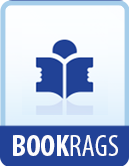Thus, the sea being—calm, and a fresh breeze blowing off the land, did Christopher Columbus set sail from Palos at sunrise on Friday the 3rd of August 1492.
CHAPTER XIII
EVENTS OF THE FIRST VOYAGE
“In nomine D.N. Jesu Christi—Friday, August 3, 1492, at eight o’clock we started from the bar of Saltes. We went with a strong sea breeze sixty miles,—[Columbus reckoned in Italian miles, of which four = one league.]—which are fifteen leagues, towards the south, until sunset: afterwards to the south-west and to the south, quarter south-west, which was the way to the Canaries.”
With these rousing words the Journal
[The account of Columbus’s first voyage is taken from a Journal written by himself, but which in its original form does not exist. Las Casas had it in his possession, but as he regarded it (no doubt with justice) as too voluminous and discursive to be interesting, he made an abridged edition, in which the exact words of Columbus were sometimes quoted, but which for the most part is condensed into a narrative in the third person. This abridged Journal, consisting of seventy-six closely written folios, was first published by Navarrette in 1825. When Las Casas wrote his ‘Historie,’ however, he appears here and there to have restored sections of the original Journal into the abridged one; and many of these restorations are of importance. If the whole account of his voyage written by Columbus himself were available in its exact form I would print it here; but as it is not, I think it better to continue my narrative, simply using the Journal of Las Casas as a document.]
of Columbus’s voyage begins; and they sound a salt and mighty chord which contains the true diapason of the symphony of his voyages. There could not have been a more fortunate beginning, with clear weather and a calm sea, and the wind in exactly the right quarter. On Saturday and Sunday the same conditions held, so there was time and opportunity for the three very miscellaneous ships’ companies to shake down into something like order, and for all the elaborate discipline of sea life to be arranged and established; and we may employ the interval by noting what aids to navigation Columbus had at his disposal.
The chief instrument was the astrolabe, which was an improvement on the primitive quadrant then in use for taking the altitude of the sun. The astrolabe, it will be remembered, had been greatly improved, by Martin Behaim and the Portuguese Commission in 1840—[1440 D.W.]; and it was this instrument, a simplification of the astrolabe used in astronomy ashore, that Columbus chiefly used in getting his solar altitudes. As will be seen from the illustration, its broad principle was that of a metal circle with a graduated circumference and two arms pivoted in the centre. It was made as heavy as possible; and in using it the observer




